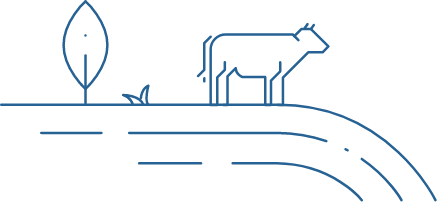Bulletin of the IDF N°519/2022: C-Sequ LCA guidelines for calculating carbon sequestration in cattle production systems
The concept of carbon sequestration is acknowledged as a potential way for agriculture to not just emit carbon dioxide, but store it, removing it from the atmosphere. Up until now there has been no consensus on an appropriate LCA-based approach for application in cattle production systems to quantify carbon removals. The focus has always been […]
Bulletin of the IDF N°518/2022: C Sequ Life cycle assessment guidelines for calculating carbon sequestration in cattle production systems
Bulletin of the IDF N°518/2022: The World Dairy Situation Report 2022
Annual survey containing information on milk and dairy production, processing, companies, consumption, trade, and prices. Comprehensive data from national and international sources. Description of current trends. Global and regional commentary covering all major producing and consuming countries. Keywords: dairy economics, milk production, dairy products, processing, industry, consumption trends, markets, world trade, milk, and dairy prices. Cite […]
IDF Annual Report 2021-2022
Our Annual Report 2020-2021 provides an overall picture of the activities and achievements of IDF over the last 12 months.
Subscription – All IDF Bulletins 2023
This subscription gives you the right to receive and access permanently all Bulletins related to this specific year in PDF format. As soon as articles become available, you will receive a notification by e-mail. 2023
Issue 5: IDF Dairy Sustainability Outlook
IDF Dairy Sustainability Outlook issue 5 is a special edition, dedicated to the United Nations Food Systems Summit. Guided by five Action Tracks of the Summit, case studies from the dairy community are presented, showcasing how the sector is committed to nourishing the global population with safe and nutritious foods through sustainable production systems. Cite this content […]
Bulletin of the IDF N°517/2022: Eco-friendly and energy-saving dairy technologies
The dairy processing sector has proven to be a committed adopter of energy saving technologies over the years. To date, evolving energy conserving measures have been incorporated in virtually all traditional unit processes deployed in dairy processes without compromising food safety and security. Emerging milder processing technologies with their promise of lower energy consumption require […]
ISO 8196-3 | IDF 128-3: 2022 – Milk — Definition and evaluation of the overall accuracy of alternative methods of milk analysis — Part 3: Protocol for the evaluation and validation of alternative quantitative methods of milk analysis
This document specifies a protocol for the evaluation and validation of alternative quantitative methods of milk analysis. This document is also applicable for the validation of new alternative methods where, due to a limited number of operational instruments, the execution of an interlaboratory study and ISO 8196-1 | IDF 128-1 is not feasible.The protocol is […]
Bulletin of the IDF N° 516/2022: Heat Treatment of Milk
Heat treatment is the most widely used processing technology in the dairy sector to guarantee product safety and longer shelf-life. It includes treatments such as thermisation and usually combined with very clean packaging technology, is increasingly applied in many countries. ESL processing intends to combine the advantages of HTST pasteurisation, such as no cooking flavour […]
Bulletin of the IDF N° 486/ 2017: The IDF Guide to Water Footprint Methodology for the Dairy Sector
These guidelines are intended to reach better understanding of water footprint assessment within the dairy sector. They provide transparency about a dairy product’s water profile throughout its life cycle to allow monitoring, quantification and evaluation of the potential environmental impacts related to water use. The document reviews previous work on life cycle assessment and provides […]






